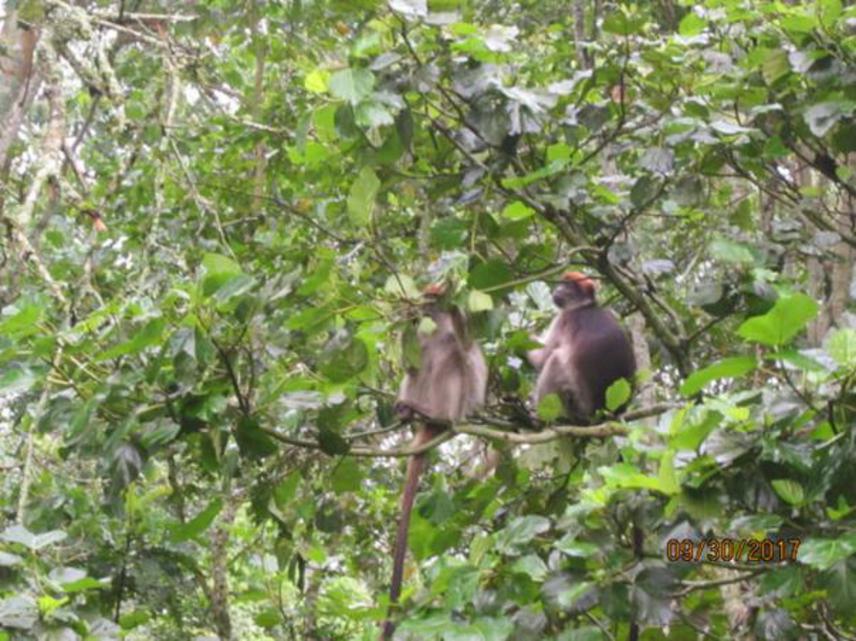Moses Chemurot
This project aims to promote the conservation of Red Colobus in Itwara and Matiri Forests in Uganda where increasing human activities pose serious threats to the survival of this primate species. We will monitor the populations and habitat quality of this threatened primate species and use the results to lobby the government to accord more priority for these forests to ensure sustainable conservation of their rare biological diversity. In addition, the project promote environmental conservation by educating pupils, youth and women on conservation practices and beekeeping.

Red Colobus.
The Albertine rift region is one of the key biodiversity hotspots. In recent decades, the region has experienced increased intensity of anthropogenic activities threatening the survival of many species. The impacts of the ongoing human activities are more critical in the smaller forest fragments especially by reducing habitat areas, their quality and food resources for wildlife.
Itwara and Matiri Central Forest Reserves are located in the Albertine rift region of western Uganda. Both are small remnant forests (Matiiri (64 km2) and Itwara (84 km2) surrounded by high human population densities. Human activities like agriculture are on the increase in and around these forests threatening key species including the endangered Red Colobus (Procolobus rufomitratus tephrosceles) that was recently reported in these forests. The project aims to promote the conservation of Red Colobus in Itwara and Matiri forests. Specifically, this project will follow-up on recent findings to monitor the populations and habitat quality for this endangered primate species in these forests. Transect walks will be conducted while making observations on Red Colobus groups during both the wet and dry seasons. In addition, in each plot, vegetation will be qualitatively described showing dominant species. Selected specimens will be collected for further identification where deemed necessary. Vegetation assessments will be conducted at points were the monkeys are observed. Synthesis data generated from vegetation studies will be used to map the habitat of Red Colobus.
This project will also assess the socio-economic factors that may be influencing the survival of Red Colobus in the two forests. The findings from this study will be used to carry out environmental awareness and capacity building for communities. Priority will be given to environmental protection issues, climate change problem solving techniques and linkages between environment and food security. Also, environmental action groups for reviling environmental problems will be formed from youth.